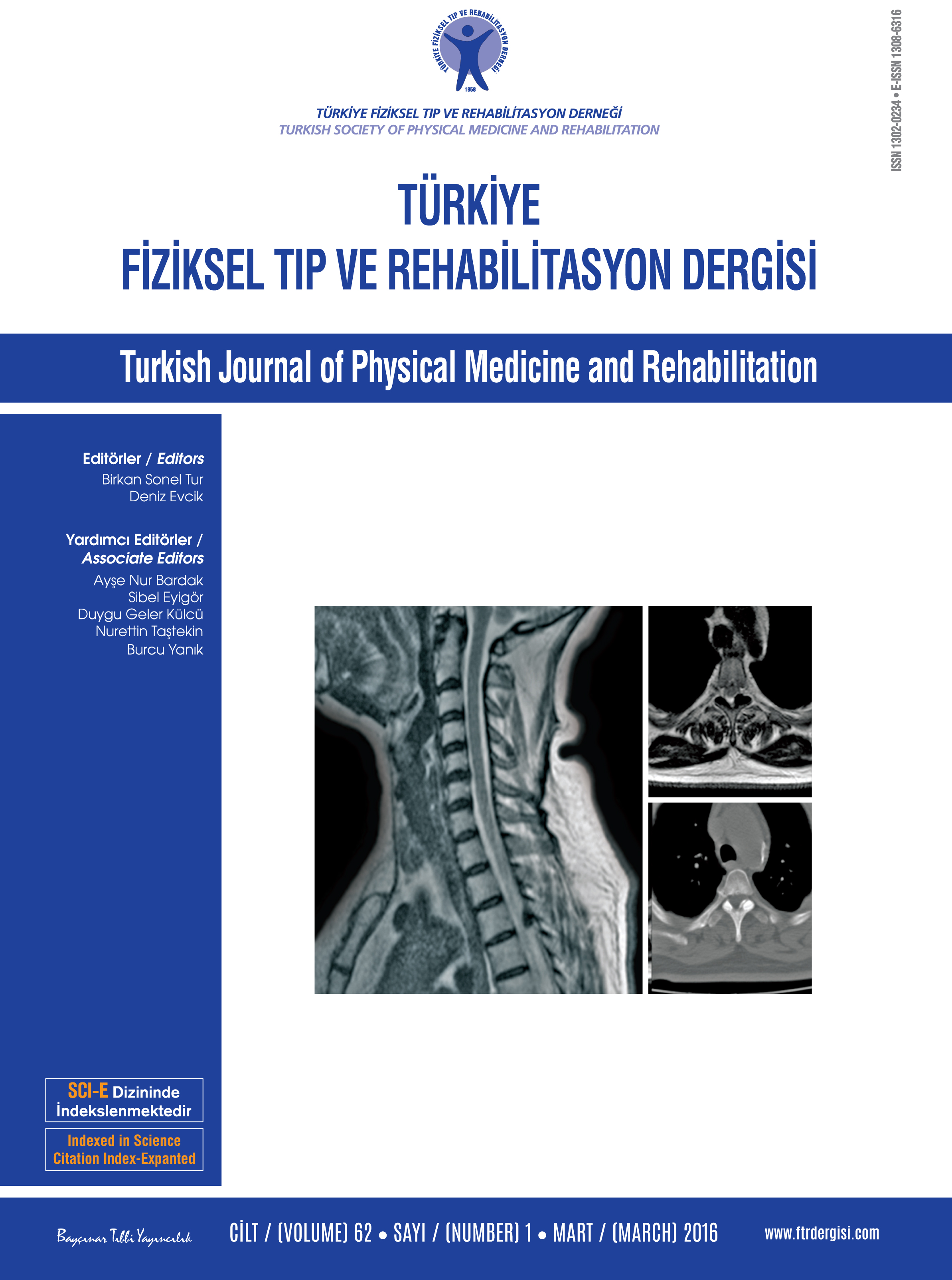The assessment of pain in patients with multiple sclerosis and its association with quality of life, fatigue, and depression
2 Ankara Fizik Tedavi ve Rehabilitasyon Eğitim ve Araştırma Hastanesi, Fiziksel Tıp ve Rehabilitasyon Kliniği, Ankara, Türkiye
3 Ankara Numune Eğitim ve Araştırma Hastanesi, Nöroloji Kliniği, Ankara, Türkiye DOI : 10.5606/tftrd.2016.98215 Objectives: This study aims to evaluate pain and triggering factors in patients with multiple sclerosis (MS) and to investigate the relation between pain and quality of life, fatigue, and depression.
Patients and methods: Between January 2010 and March 2012, a total of 104 patients (33 males, 71 females; mean age 39.06+9.01 years; range, 18 to 62 years) who were diagnosed with definite MS according to the McDonald diagnostic criteria were enrolled to our study. The patients were questioned about the presence of pain and divided into two groups as those with (n=73) and without (n=31) pain. The patients with pain were assessed for the pain duration, intensity, quality, localization, type, classification, and triggering factors. The visual analog scale (VAS), Short Form-36 (SF-36), Beck Depression Inventory (BDI), and Fatigue Severity Scale (FSS) were used as clinical assessment scales.
Results: Of the patients, 70.2% had a complaint of pain within the past month. Pain was most frequently localized in the legs (80.8%) with numbness or tingling (35.6%). The most common type of pain was dysesthetic extremity pain (%47.9). According to the classification of the pain type, the mixed type (neuropathic and non-neuropathic) pain was the most common type of pain (%57.5). There was no significant difference in the depression severity between the groups with and without pain (p>0.05). The mean FSS scores and level of fatigue were significantly higher in the patients with pain (p<0.001). Based on the evaluation of the SF-36, all parameters except the physical functioning were found to be statistically significantly higher in patients without pain (p<0.05).
Conclusion: The awareness on pain, a common symptom in MS patients, should be increased. Every MS patient should be evaluated for the presence and characteristic of pain. Therefore, an effective treatment of pain will help to reduce the severity of fatigue and improve the quality of life in MS patients.
Keywords : Depression; fatigue; multiple sclerosis; pain; quality of life

















